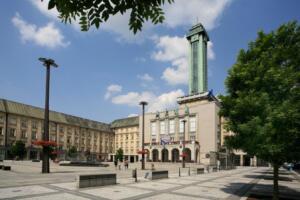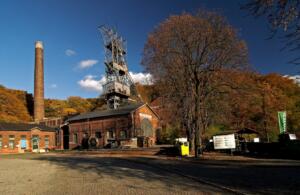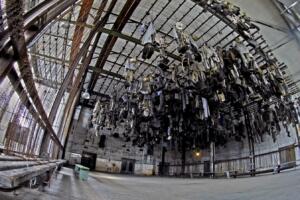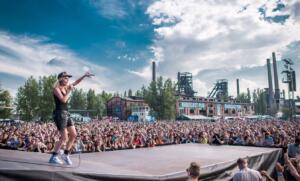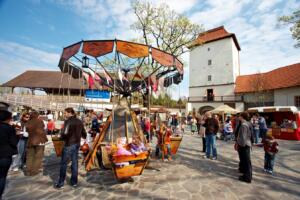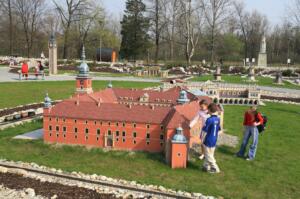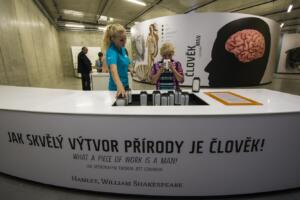City of Ostrava
Ostrava, the third largest city of the Czech Republic, is located in the northeast of the territory and is the heart of the Moravian-Silesian Region. It lies near the Slovak and Polish borders with a view of the beautiful Beskydy Mountains.
The first mention of the establishment of the village in the property of the Olomouc bishop Bruno dates back to 1267. The town was founded on the so-called Amber Road, which merchants used since ancient times as the main route connecting the Baltic and Mediterranean seas. In the second half of the 14th century city walls were built, perhaps the city castle was also part of the fortifications. Today, the walls are remembered only by the street name Na hrdbách and a fragment near the church of St. Wenceslas. Over the centuries, the city experienced numerous fires and military incursions, but also a period of flourishing trade and handicrafts. The breakthrough was the discovery of coal in the second half of the 18th century, which was later followed by the development of ironworks. Ostrava long ago lost the face of a typical industrial city, coal mining finally ended in 1994.
Mining museums were established on the site of the original mines, and a number of closed metallurgical buildings are still waiting for their opportunity. The industrial heritage represents an exceptional architectural gem. In addition to technical monuments, the city offers visitors a whole range of cultural and historical attractions and other attractions that allow you to spend pleasant days full of unforgettable experiences.
Ostrava belongs to important transport arteries and is very easily accessible by road and rail network, including air transport. The range of accommodation and catering facilities will satisfy the needs and wishes of even the most demanding visitor. You can look forward to comfort and care that will remain in your memory for a long time after returning home. Traditional Czech hospitality is famous, as well as excellent cuisine. You will be seduced by the taste and aroma of familiar and unfamiliar dishes, as well as specialties that are typical for this region.
The Moravian-Silesian metropolis of Ostrava attracts unique architecture and natural rarities. Go for culture, sports and unusual experiences. Experience the transformation of the former steel town for yourself.
Source: https://www.ostrava.cz
Ostrava: the story of the ugly duckling
Ostrava, previously considered the steel heart of the republic immersed in a cloud of smog, has burst into beauty mainly in recent years and proudly bears the status of the Moravian-Silesian metropolis. It has become not only a sought-after tourist destination, but also a favorite place for many filmmakers, who admire its character and unmistakable atmosphere. During a walk through the city, you can easily come across a film crew currently shooting a new film, series or video clip. With approximately 285,000 inhabitants, it is the third largest city in the Czech Republic and is worth a visit mainly because of the unique set of industrial architecture in the Dolní Vítkovice area.
Natural attractions are also richly represented. E.g. Polanský les and Polanská niva, which are part of the Poodří protected landscape area. Natural rarities in the city also include bludne balvany made of Swedish granite and another unique is Halda Ema in Silesian Ostrava. Hermanický rybník, which is unique due to its specific composition, should definitely not miss your attention mineralized water with boron and iodine content. You can get to it along the nature trail or you can take a bus. P.S. binoculars will come in handy for watching waterfowl.
Non-traditional experiences that only Ostrava can offer you
In addition to important buildings and sacred monuments, you can visit a number of museums and galleries or the legendary Stodolní street, which has over 60 bars, clubs, restaurants and cafes. Children will enjoy a trip to the Zoo, Planetarium or Dinopark. And Ostrava also offers non-traditional experiences.
✅ Bolt Tower in Ostrava – Bolt Tower, or bolt tower. This is a cafe, a space for remembering history, a club and a viewing terrace. All of this is part of the new superstructure of Vysoké Pece No. 1 in Dolní Vítkovice, which grew by approximately 25 meters and thus became the highest geographical point in the city.
✅ Areál Dolní Vítkovice – a unique industrial monument. Dolní Vítkovice consists of the former industrial area of Dolu Hlubina, coke ovens and blast furnaces of the Vítkovice ironworks. The complex is a unique industrial monument and an unmistakable symbol of Ostrava and the entire Moravian-Silesian region.
✅ Fairytale Astrology – every even hour from 8 a.m. to 8 p.m. you can see performances of six wooden puppets in the windows of the Puppet Theater of fairy-tale characters: a king, a queen, a devil, an angel, and a mortal fighting with a clown.
✅ World of miniuni miniatures – a small world full of well-known world buildings, e.g. the Eiffel Tower in Paris, the Egyptian pyramids or you can see London’s Big Ben at the Black Meadow exhibition centre.
✅ Toy Museum – own unique items from more than 60 countries as well as the oldest toys from the mid-19th century.
✅ Brewery Museum – a tour with a tasting will delight all lovers of the golden liquid.
Ostrava lives by sport and culture
The city has a long-standing sports tradition and currently hosts events of a national, European or even global nature. Every year, Ostrava organizes the international athletics meeting Zlatá tretra or the women’s tennis WTA challenger J&T Banka Ostrava Open. In the past, it was, for example, a co-organizer of the Ice Hockey World Championship, the European Figure Skating Championship


